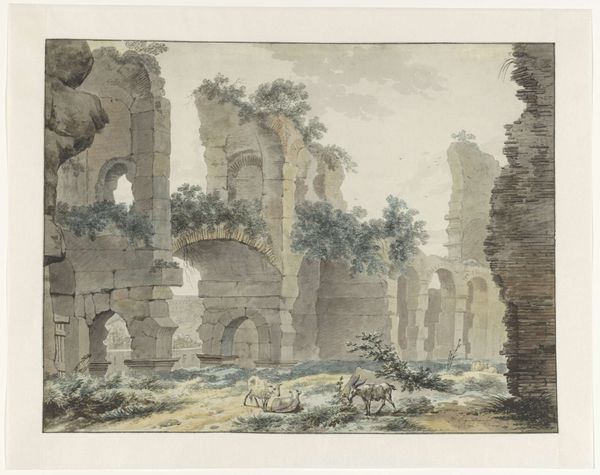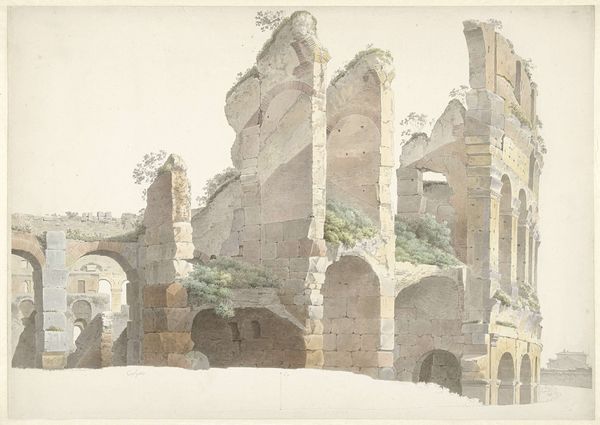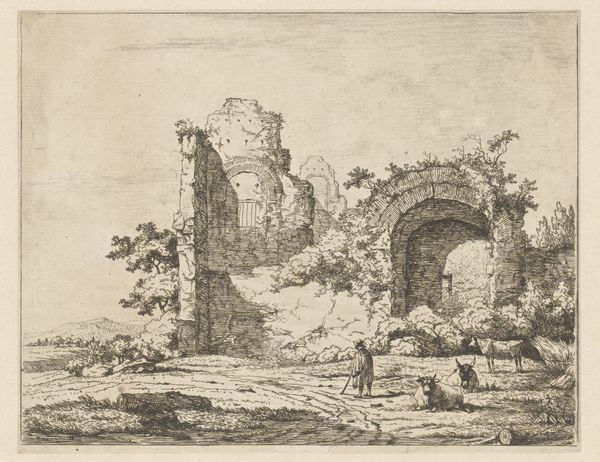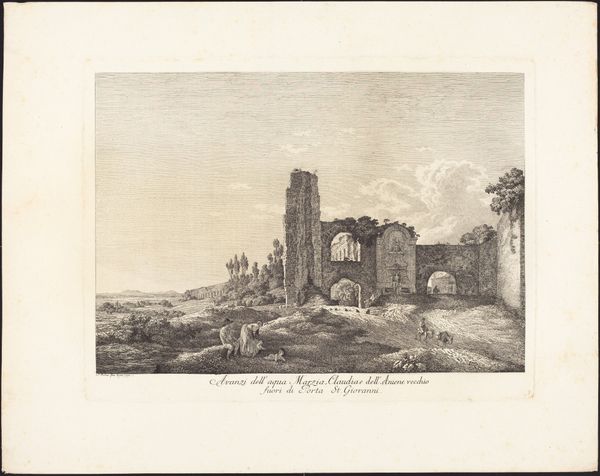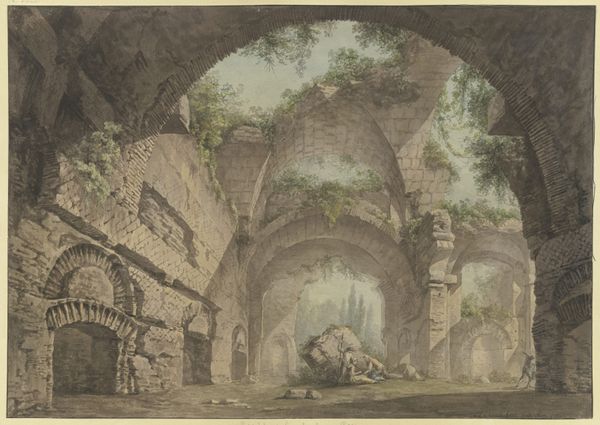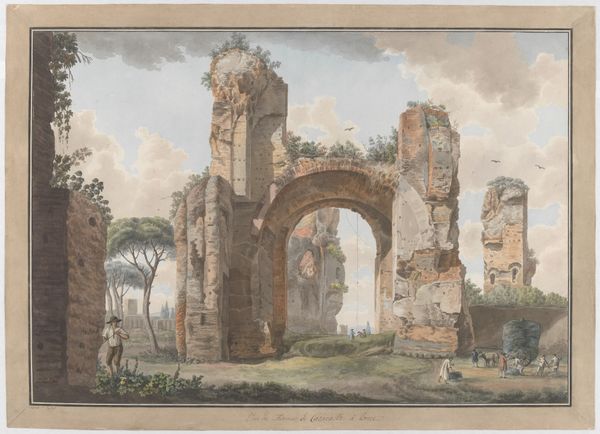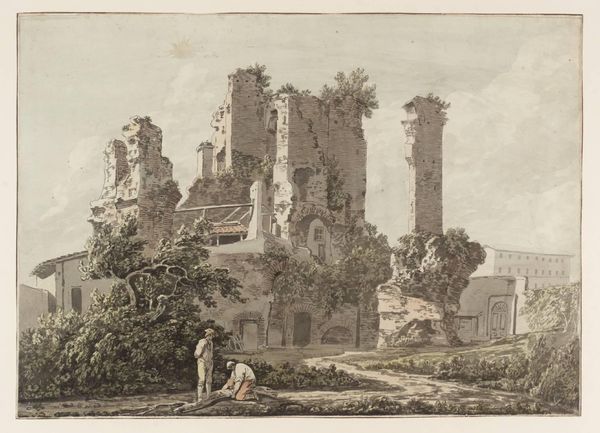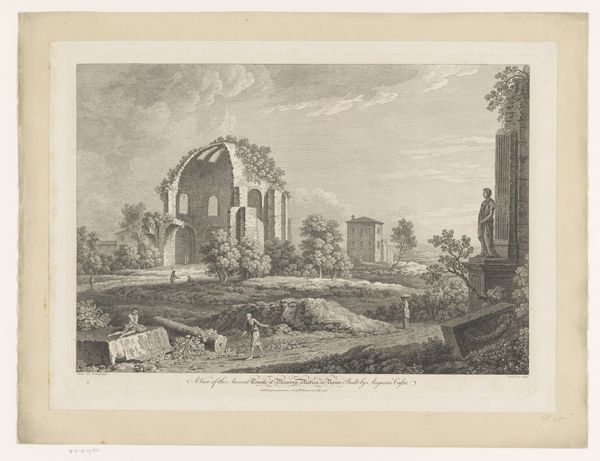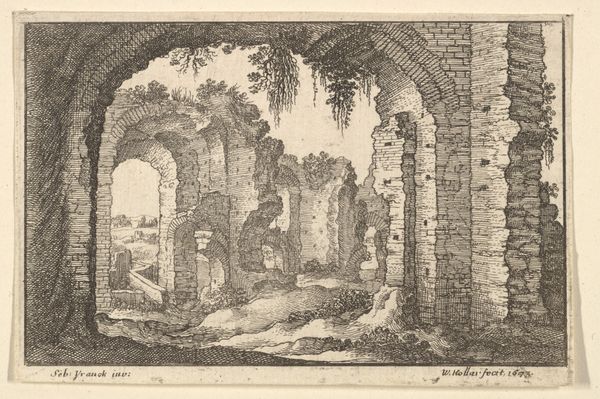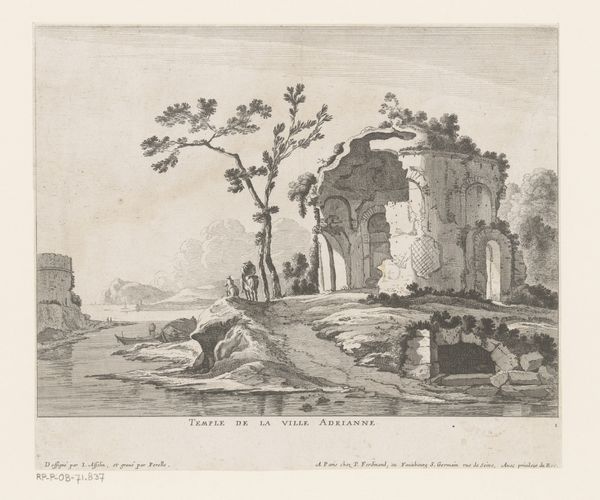
drawing, watercolor
#
drawing
#
neoclacissism
#
landscape
#
classical-realism
#
watercolor
#
cityscape
#
watercolour illustration
Dimensions: height 407 mm, width 532 mm
Copyright: Rijks Museum: Open Domain
Curator: What a hauntingly beautiful depiction of antiquity's decay. Editor: It's terribly sad, a sense of grandeur fading under the weight of time. It’s also technically skillful in depicting how time literally affects the Colosseum bricks: some seem eroded away, while the artist included others, solidifying the permanence that humanity is trying to seek from monument-building. Curator: Indeed. This is Jean Grandjean's "Gezicht in het Colosseum met op de voorgrond een monnik," or "View of the Colosseum with a Monk in the Foreground," created in 1779 using watercolor and drawing techniques. A study in the appropriation of space as well as the socio-economic aspects of landscape depiction through watercolor drawing, it appears. Editor: Looking at the Colosseum's form, I note how Grandjean plays with light and shadow, and the structure itself. The rhythm of the arches creates a stunning pattern that is simultaneously solid and permeable because we can clearly see light leaking through. The medium further softens those boundaries to indicate the passage of time. Curator: Quite right. Think about the material conditions that allowed Grandjean to render such a scene. Access to paper, pigments, brushes, a patron perhaps – all reflect a certain societal privilege to create and contemplate ruins in this way. Who was Grandjean creating it for, and how did they use or value it? Editor: Perhaps as a meditation on mortality or a memento for the Grand Tourists? Also, look at the monk. Grandjean deliberately diminishes the monk’s figure against the backdrop of a mammoth, but dilapidated structure. What does the scale of the monk next to the ruins signify? What meanings would Grandjean and the society it depicts make? Curator: The positioning does add a certain contemplative note to the piece, indeed. Considering the labor and materials invested versus the eventual function... did it function merely as a record, or to invite social commentary and prompt discussions of civilization? The choice of watercolor on paper, relatively accessible media for the time, invites questions of how art became a commodity for a rising middle class, with views like these becoming fashionable souvenirs. Editor: The artist wants you to compare humanity’s scale to history; in order to see it and also consider its weight on any viewer. In terms of colors, it is very uniform and contained in the earthly range with a hint of a brighter, sky tone to remind us of temporality. Curator: Thank you, such interesting insights regarding visual balance. For me, considering all we've said, is not so much an assertion of the art's internal aesthetic coherence but more about understanding how historical contexts shaped its creation, reception, and continuing value. Editor: An insightful, and grounded approach! Thank you.
Comments
No comments
Be the first to comment and join the conversation on the ultimate creative platform.
